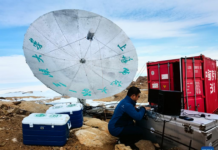A Chinese research team has made a significant leap forward in synthetic biology by accurately synthesizing and assembling large-scale human DNA and successfully transferring it between species.
According to the researchers, this achievement not only improves the technology for synthesizing the human genome, but also opens up new avenues for treating genetic disorders.
The study, conducted by the State Key Laboratory of Synthetic Biology at Tianjin University, was recently published in the international journal Nature Methods under the title “De novo assembly and delivery of synthetic human megabase DNA into early mouse embryos.”
A team led by Chinese Academy of Sciences academician Yuan Yingjin has developed a method called SynNICE. This method involves assembling synthetic human genomic DNA in yeast and then extracting yeast nuclei with intact chromosomes using a technique called NICE (Nucleus Isolation for Chromosomes Extraction). The extracted nuclei containing synthetic DNA were then injected into early mouse embryos.
The researchers focused on a specific region of the human genome known as AZFa, located on the Y chromosome. This region is crucial for male fertility, and its deletion can lead to severe infertility, which currently has no clinical treatment. The AZFa region contains a high percentage of repetitive sequences, making it particularly challenging to synthesize and assemble. Despite this, the team successfully synthesized this region in yeast and transferred it to mouse embryos.
For the first time, the team observed the transcription of synthetic human DNA in mouse embryos. This study not only shows how the cellular environment can change the shape of synthetic genomes, but also opens up prospects for future biomedical applications.









